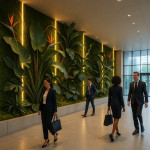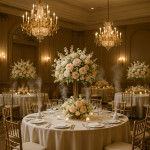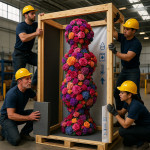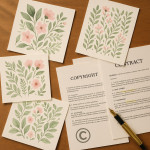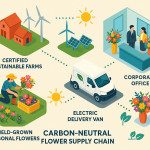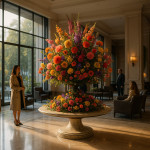Photogrammetry for floral artists: create realistic 3D mock-ups that sell
Want to win higher-value floral installations before a single stem is ordered? Photogrammetry lets you turn a real bouquet into an interactive 3D mock-up clients can rotate, zoom and approve in minutes. Follow this guide to master the technique, price it confidently and avoid the beginner traps that sink presentations.
Why photogrammetry is a revenue magnet for floral artists
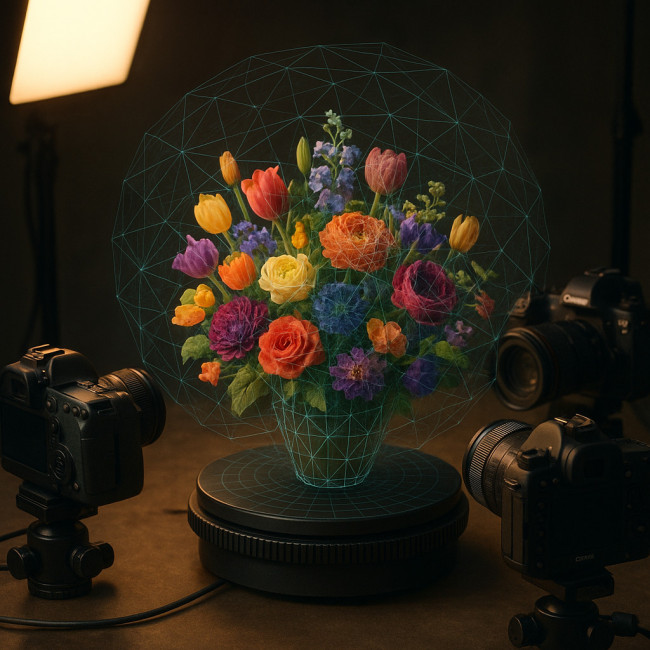
Event planners and brand agencies increasingly demand accurate previews of large-scale flower pieces. Traditional sketches or foam maquettes rarely convey texture, colour shifts or volume. Photogrammetry generates a photo-realistic 3D replica from dozens of overlapping shots, giving buyers immediate confidence and shortening approval cycles by up to 40 % according to recent agency surveys.
Photogrammetry, defined
In simple terms, photogrammetry is the process of stitching 2D photos taken at multiple angles into a textured 3D model. Modern software automates the maths: you supply sharp, evenly lit images, and the algorithm reconstructs geometry and colour.
Benefits over classic mock-ups
| Feature | Foam/Sketch Mock-up | Photogrammetry Mock-up |
|---|---|---|
| Visual accuracy | Approximate | Sub-millimetre fidelity |
| Client interaction | Static | Full 360° rotation & zoom |
| Revision time | Hours of re-sculpting | Minutes—adjust digital file |
| Reusable assets | Single project | Library for future pitches |
| Shipping costs | Courier/fragile | None—send link |
Still on the fence? Designers in adjacent fields already rely on digital previews. See how object designers boost commissions with photorealistic mock-ups, or how glass artists close deals via interactive 3D previews. Floral art is simply catching up.
Step-by-step workflow: from bouquet to 3D file
1 – Stage your flowers and lighting
- Choose fresh blooms with minimal wilting.
- Use a neutral turntable and backdrop; mid-grey minimises colour spill.
- Light softly from at least three sides to kill harsh shadows.
- Mark the table so your bouquet stays centred throughout rotation.
2 – Capture 80–120 overlapping photos
Set your DSLR or mirrorless to aperture priority at f/8, ISO 100–400. Maintain 70 % overlap between frames while circling the arrangement in two vertical tiers (eye level and 45° down). Lock white balance to avoid colour flicker.
3 – Process in affordable software
- Import images into free options like Meshroom or budget licences such as RealityCapture.
- Run “Feature Detection” and “Structure from Motion” modules.
- Generate a dense point cloud, then create the mesh.
- Bake 8K textures for crisp petal detail.
4 – Clean, scale and optimise
Open the mesh in Blender or Cinema 4D. Delete stray geometry, fill holes and apply a Decimate modifier to target 100–150 k polygons—light enough for web viewers while keeping nuance.
5 – Build a persuasive scene
Place your model inside a virtual event hall or product shoot. Add branded plinths, visitor silhouettes and accurate lighting. For inspiration, see how mosaic artists pitch façades with immersive 3D mock-ups. Export to glTF or USDZ for instant browser and AR compatibility.
Pricing & ROI: turn pixels into profit
Photogrammetry adds tangible value; don't price it like an afterthought. A practical formula:
- Base floral design fee × 1.25 (to cover extra prep and kit).
- + Hourly capture and processing (average 4 h × €60).
- + Digital asset licence (10–15 % of final installation fee).
For a €6 000 lobby installation, expect a mock-up quote near €1 650. Early adopters report closing 20 % more proposals at this tier. Need benchmarks from other spatial creatives? Review interior architects who price VR walkthroughs similarly.
Integrating photogrammetry into your sales funnel
Nail the narrative
Present the 3D model within a story: “Guest enters, pauses at the scented arch, photos bloom on social timelines.” Humans buy emotion, not triangle counts.
Embed on discovery platforms
Upload your interactive mock-ups to profiles potential clients already browse, such as the Artfolio craft-designer directory. Recruiters filter by rich media first; a rotating bouquet beats a static JPEG every time.
Reuse the asset for marketing
Slice renders for Instagram Stories, loop a turntable GIF on your website and include AR codes in printed brochures. One capture session, infinite content.
Common pitfalls (and quick fixes)
- Shadow artifacts: add reflectors or increase ambient fill.
- Texture seams: enable texture padding and rebake at higher resolution.
- File too heavy: compress textures to 2K for web previews, keep 8K master for AR.
- Client hardware errors: include a fallback video walkthrough link.
Mini-quiz: are you photogrammetry-ready?
FAQ
- Do I need a high-end camera?
- A mid-range mirrorless (24 MP, kit lens) is enough. Consistent lighting matters more than megapixels.
- How long does the entire process take?
- Once practiced, 45 minutes to shoot and 2–3 hours to process and clean.
- Can I outsource the 3D clean-up?
- Yes, many freelancers specialise in mesh optimisation; budget €80–€120 per project.
- Will the flowers wilt during shooting?
- Keep the studio below 20 °C and mist lightly between rotations to maintain freshness.
- Is photogrammetry sustainable?
- Absolutely—no foam blocks or courier emissions for physical models, only electricity for processing.
Next step: wow your next client
Download a free photogrammetry checklist, shoot your first 3D bouquet this week and add it to your next pitch. Your future self—and your profit margin—will thank you.
Ready to level-up? Book a discovery call and learn how integrated 3D pitches can elevate your floral brand.
